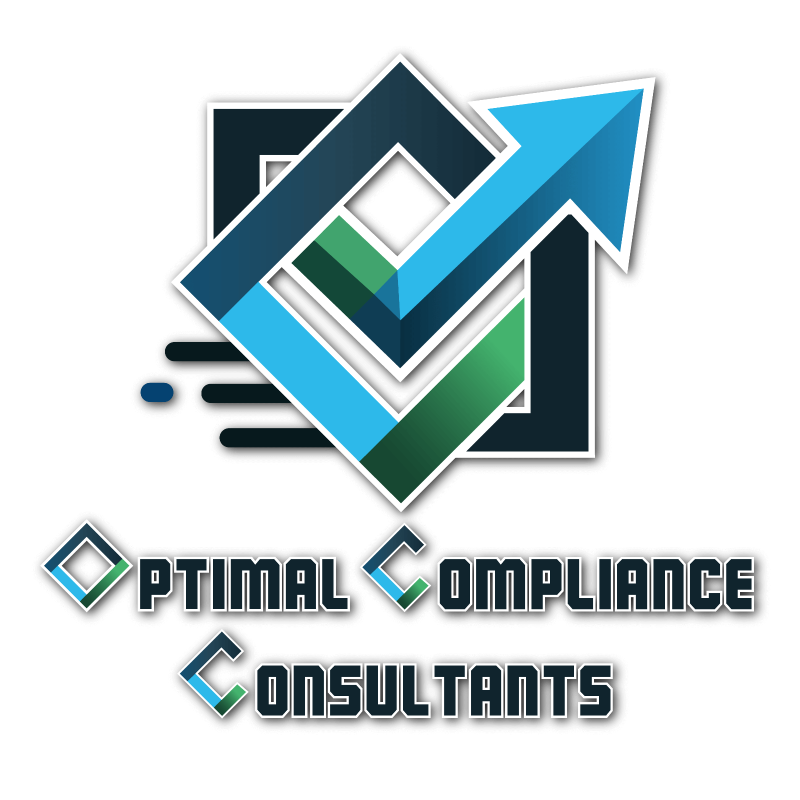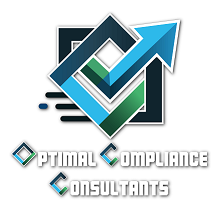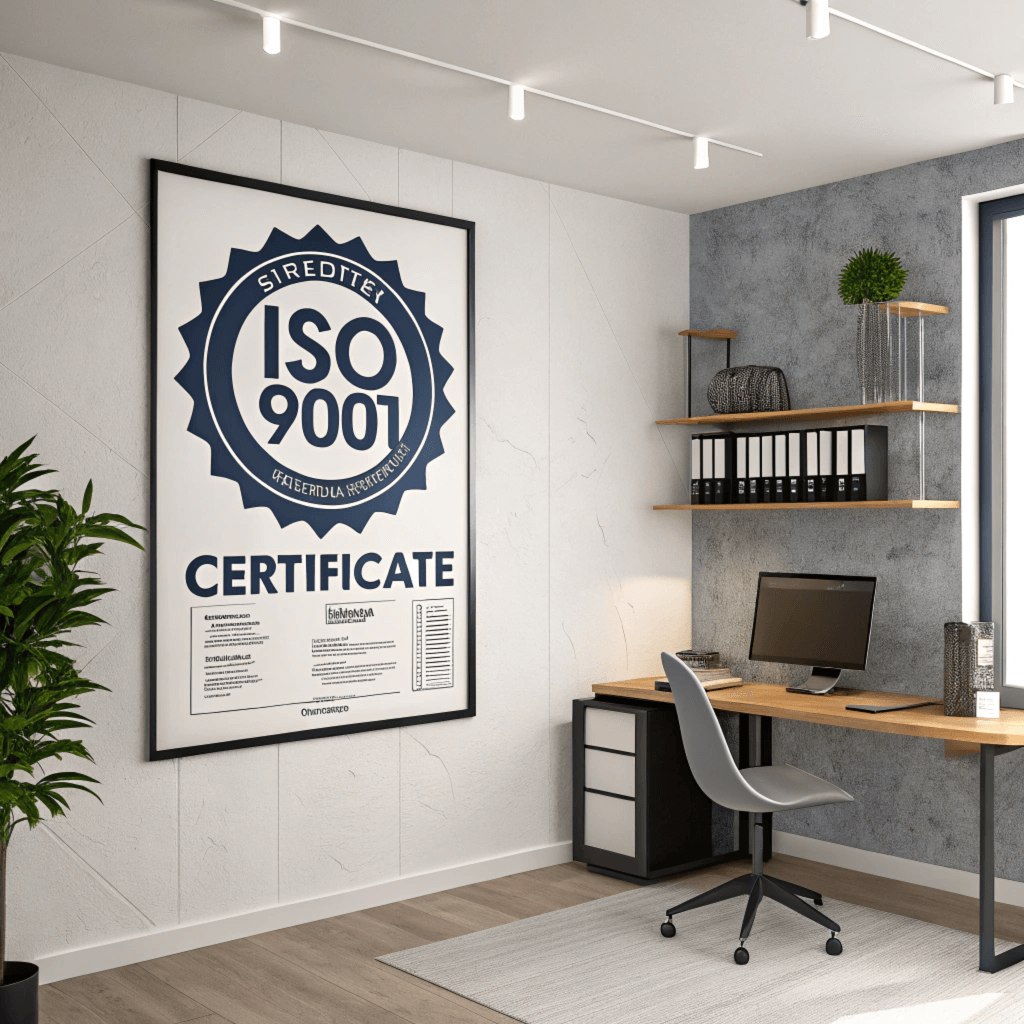The Complete Guide to ISO 9001 Certification: From Application to Approval
Introduction
In today’s competitive business landscape, organizations are continually seeking ways to enhance operational efficiency, increase customer satisfaction, and achieve a competitive edge. One of the most effective ways to demonstrate quality management and operational excellence is through ISO 9001 certification. This globally recognized standard helps businesses ensure they meet the needs of their customers while maintaining a systematic approach to quality management.
What is ISO 9001?
ISO 9001 is an international standard for quality management systems (QMS). It provides a structured framework to help organizations improve their processes, reduce inefficiencies, and ensure high levels of customer satisfaction. The ISO 9001 standard applies to any organization, regardless of size, industry, or location, and is based on several principles, including customer focus, leadership, and continuous improvement.
Why is ISO 9001 Certification Important?
ISO 9001 certification proves to customers, stakeholders, and partners that an organization is committed to meeting regulatory requirements and delivering consistent quality. It fosters trust, supports operational improvements, and opens new business opportunities.
Key Statistics
According to ISO’s annual survey, over 1.6 million organizations worldwide are ISO 9001 certified. This widespread adoption highlights the standard’s global impact on quality management and its importance for businesses aiming for international recognition.
For more detailed statistics, you can refer to ISO.org.
Understanding 9001 Accreditation: What You Need to Know
What is ISO 9001 Accreditation?
ISO 9001 accreditation refers to the recognition that an organization’s QMS meets the requirements of the ISO 9001 standard. This distinction is awarded by an accreditation body that assesses whether the QMS is designed, implemented, and maintained according to ISO guidelines.
Certification vs. Accreditation
While the terms “certification” and “accreditation” are often used interchangeably, they are different:
- Certification: Granted to an organization by a certification body to confirm its compliance with ISO 9001 standards.
- Accreditation: Involves an accreditation body that ensures the certification bodies meet international standards for issuing certifications.
Key Components of ISO 9001:2015 Standard
The ISO 9001:2015 version is the latest update and focuses on a risk-based approach, leadership involvement, and continual improvement. Key components include:
- Context of the Organization: Understanding the business environment.
- Leadership: Management’s commitment to the QMS.
- Risk-based Thinking: Identifying and managing potential risks and opportunities.
- Improvement: Constantly seeking ways to improve processes and performance.
Benefits of ISO 9001 Accreditation
- Improved Operational Efficiency: Streamlining processes, reducing waste, and enhancing resource management.
- Enhanced Customer Satisfaction: By meeting customer needs and delivering consistent quality.
- Better Market Opportunities: ISO 9001 certification can be a requirement for entering certain markets.
- Cost Savings: Standardized processes reduce errors, rework, and inefficiencies.
- Competitive Advantage: Gaining a reputation for quality and reliability helps attract customers and partners.
For more on the benefits of accreditation, check out ASQ Quality Resources.
Step-by-Step: The ISO 9001 Certification Process
Phase 1: Preparation
1. Initial Assessment
The first step in the ISO 9001 certification process is performing an initial assessment to identify gaps between current practices and the requirements of the standard. This assessment includes:
- Gap analysis: Identifying areas where your organization’s processes do not meet ISO 9001 standards.
- Resource evaluation: Understanding the resources (human, technological, financial) needed to implement the QMS.
- Timeline planning: Setting realistic deadlines for achieving ISO 9001 certification.
2. Documentation Requirements
One of the most crucial steps in ISO 9001 certification is developing the required documentation. This includes:
- Quality Manual: A comprehensive document that outlines your organization’s QMS.
- Process Documentation: Descriptions of how processes are conducted to ensure consistency and quality.
- Required Records and Forms: Includes logs, reports, and audit trails that demonstrate compliance with the QMS.
Phase 2: Implementation
1. Training Staff
Proper training is essential to ensure everyone in the organization understands the new processes and quality management principles:
- Quality Management Principles: Employees should understand the core principles behind ISO 9001, such as customer focus, leadership, and continuous improvement.
- New Procedures: Staff should be trained in the new quality management procedures, including how to perform internal audits.
2. Setting Up the Quality Management System
A successful QMS involves detailed planning, including:
- Process Mapping: Documenting and improving the flow of processes.
- Risk Assessment: Identifying potential risks and ensuring that mitigation strategies are in place.
- Performance Metrics: Establishing measurable KPIs (Key Performance Indicators) to track process performance.
For helpful templates and checklists, refer to Quality Management Templates.
How to Become ISO 9001 Certified: Essential Requirements
Core Requirements
1. Leadership Commitment
ISO 9001 emphasizes that leadership plays a critical role in the success of the QMS:
- Management Responsibility: Leadership must be actively involved in setting the direction and allocating resources for quality management.
- Resource Allocation: Ensuring that adequate resources (time, personnel, funding) are available for the QMS.
- Communication Strategy: Maintaining clear communication across all levels of the organization.
2. Process Approach
ISO 9001 promotes a process-based approach to managing operations. This includes:
- Process Identification: Recognizing and mapping out each key process in the organization.
- Process Interactions: Understanding how processes interact and influence each other.
- Monitoring and Measurement: Continuously measuring process performance to ensure desired results.
3. Risk-Based Thinking
Risk management is an essential part of ISO 9001. It involves:
- Risk Assessment Methods: Using tools like FMEA (Failure Mode Effects Analysis) to evaluate potential risks.
- Opportunity Identification: Recognizing potential opportunities for improvement.
- Mitigation Strategies: Developing plans to mitigate identified risks.
Documentation Requirements
ISO 9001 requires that certain procedures, records, and supporting documents be maintained. This documentation includes:
- Mandatory Procedures: Such as corrective actions, internal audits, and management reviews.
- Required Records: Evidence that processes are being carried out and monitored.
- Supporting Documentation: Other records that provide context to your quality management system.
For more on quality management system guidelines, visit Quality Management System Guidelines.
Implementation Tips and Best Practices
Common Challenges and Solutions
Implementing ISO 9001 can present several challenges:
- Resource Constraints: Ensure management is fully committed to allocating necessary resources.
- Employee Resistance: Foster buy-in by involving employees early in the process and offering proper training.
- Documentation Overload: Prioritize essential documents and streamline processes.
- Process Integration: Align processes across departments to ensure consistency.
Success Factors
To successfully achieve ISO 9001 certification, focus on the following success factors:
- Management Commitment: Leadership must drive the ISO 9001 implementation.
- Employee Engagement: Employees should understand and support the new processes.
- Effective Communication: Keep all stakeholders informed throughout the process.
- Regular Internal Audits: Conduct regular audits to identify areas for improvement.
For more insights, visit Quality Progress Magazine.
Certification Maintenance
Ongoing Requirements
- Internal Audits: Regularly review your processes to ensure they continue to meet ISO standards.
- Management Review: Top management should continually review the effectiveness of the QMS.
- Continuous Improvement: Identify areas for further enhancement and strive to implement improvements.
- Documentation Updates: Regularly update records and procedures as necessary.
Surveillance Audits
After certification, organizations must undergo regular surveillance audits to ensure ongoing compliance. These audits are typically:
- Frequency: Usually annually or every two years.
- Scope: Focus on key processes, areas identified during previous audits, and overall compliance with the standard.
- Preparation Tips: Keep up-to-date with your documentation and ensure processes are working effectively.
To prepare for audits, check out IRCA Auditor Resources.
Cost Considerations
Direct Costs
The direct costs of ISO 9001 certification can include:
- Certification Body Fees: The cost of hiring a third-party certification body.
- Audit Costs: Fees associated with initial and surveillance audits.
- Training Expenses: Costs related to training staff and management.
- Documentation Systems: Expenses for implementing the necessary systems to meet documentation requirements.
Hidden Costs
There are also hidden costs, such as:
- Staff Time: Time spent on training, audits, and documentation can add up.
- Process Changes: Implementing changes to processes can require investment in new tools or technology.
- Technology Upgrades: Some organizations may need to invest in software or hardware for process management and documentation.
- Ongoing Maintenance: The cost of maintaining ISO certification, such as surveillance audits and regular updates.
For a breakdown of costs, you can use tools like the ISO 9001 Cost Calculator.
ROI and Business Impact
Measuring Success
The return on investment (ROI) from ISO 9001 certification can be significant. Some key ways to measure its impact include:
- Customer Satisfaction Metrics: Positive feedback and surveys.
- Process Efficiency Measures: Reduced waste and faster production timelines.
- Financial Impact: Cost savings due to improved processes and fewer errors.
Long-Term Benefits
- Market Access: New business opportunities as a result of certification.
- Customer Satisfaction: Consistently meeting or exceeding customer expectations.
- Operational Efficiency: Continuous process improvement and better resource allocation.
- Risk Management: Identifying and addressing potential risks before they become issues.
For more on ISO 9001 benefits, visit ISO Benefits Research.





